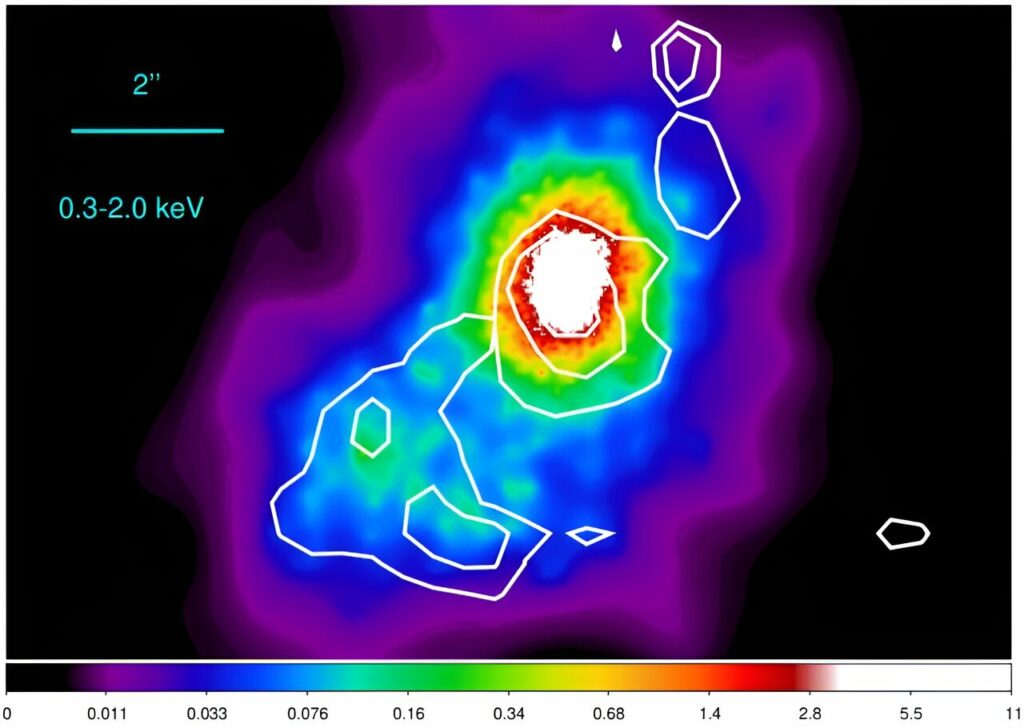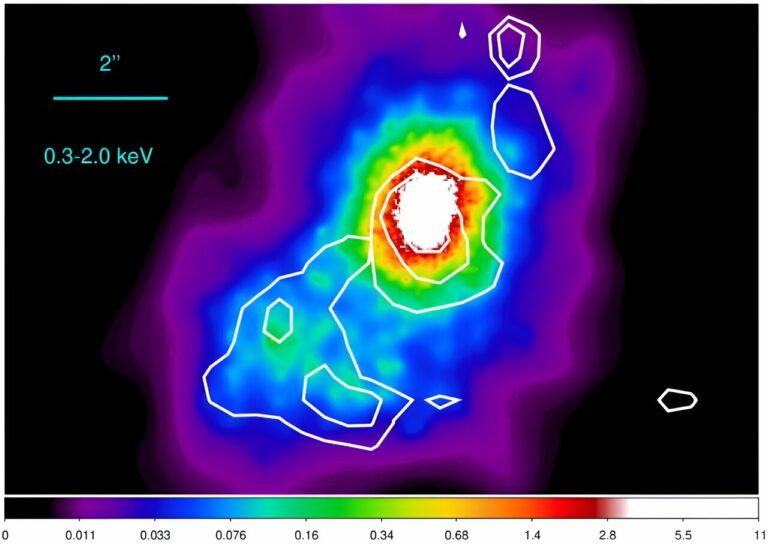Research Investigates the Remarkable Ionization Cones in the Galaxy NGC 5252
NGC 5252, a neighboring lenticular galaxy, is home to remarkably extensive ionization cones. A team of international astronomers recently conducted observations on these structures, shedding light on their properties. The findings from this observational campaign were published on the pre-print server arXiv on January 17.
Ionization cones are composed of ionized material and extend from active galactic nuclei (AGN). These cones can span tens of thousands of light years and are predominantly observed in type II Seyfert galaxies. By studying these structures, we can gain a better understanding of the interactions between AGN and their host galaxies.
NGC 5252, a type 1.9 Seyfert galaxy located approximately 329 million light years away, boasts one of the largest ionization cones in the local universe. Previous observations have revealed that these cones stretch over 130,000 light years and consist of multiple arcs confined within a bi-cone encircling the galaxy’s nucleus.
Recently, a team of astronomers led by Chen Wang from Xiamen University in China conducted a detailed examination of these cones using X-ray observations from NASA’s Chandra X-ray observatory. The researchers utilized a comprehensive dataset with a total exposure time of 230 ks, which is nearly four times deeper than previous observations. This allowed them to investigate the spatially resolved properties of the extended emission at a significant radial distance from the nucleus.

The observations conducted by Wang’s team revealed that the outermost X-ray arc of the cones extends approximately 65,000 light years from the nucleus of NGC 5252. Overall, the X-ray images demonstrate that the cone structures predominantly align with the optical ionization cones in the southeast and northwest directions.
The data obtained from Chandra observations indicate that the extended soft X-rays observed are a result of photoionization, with the AGN of NGC 5252 serving as the ionizing source for the cones. Additionally, it has been discovered that the photoionization parameter of the ionized gas in the sub-cones remains constant or slightly decreases as the distance from the nucleus increases.
Furthermore, the Chandra observations reveal that the inferred luminosity of NGC 5252’s nucleus was significantly higher in the past compared to its current luminosity. Astronomers estimate that this luminosity has decreased by approximately 98% over the course of the last 64,000 years. They propose that a minor merger event may have been responsible for this drastic change in luminosity.
Based on the comprehensive data collected, the authors of the research paper conclude that NGC 5252 bears resemblance to a quasar relic, housing a supermassive black hole (SMBH) with a mass equivalent to one billion suns. They hypothesize that the galaxy underwent a minor merger and transitioned into a state of low accretion rate.
This article is republished from PhysORG under a Creative Commons license. Read the original article.
Do not forget to share your opinion with us to provide you with the best posts !




0 Comments